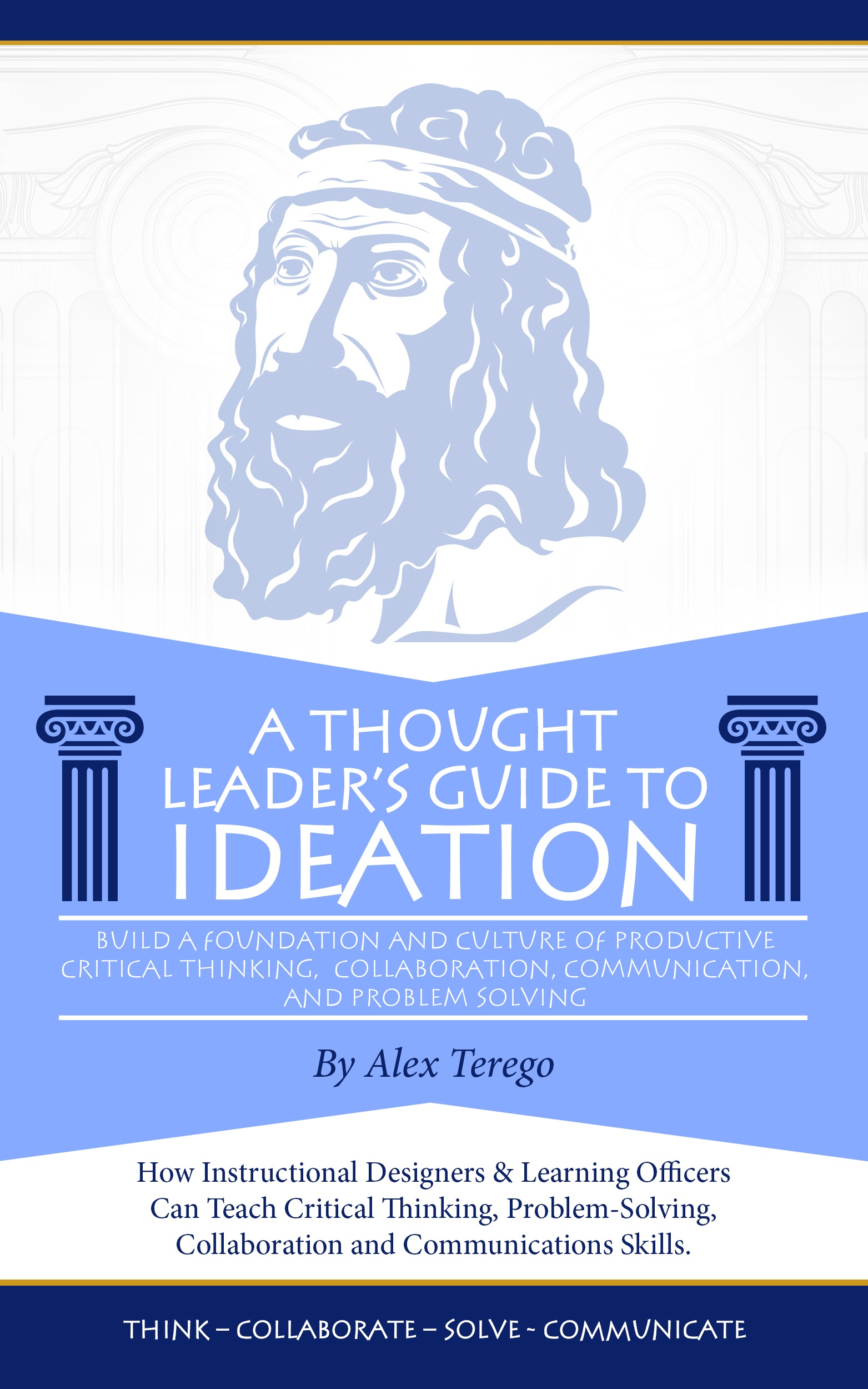The Real Value Of eLearning: How Can eLearning Surprise You Today?
You can be pleasantly surprised if you recognize that there is a big difference between these two very different objectives of all learning:
- Fact Transmission.
- Problem-Solving.
How can you recognize the difference? Simple, ask this question first! Is the purpose of any given learning session to teach all the facts that a person needs in order to do their specific job, or is the purpose of the learning session to show people how to solve problems using those facts, and other information they discover, as they work on solving an actual problem? If it’s the latter, then the techniques and methodology in this book will be invaluable.

In a little over a decade, eLearning has become a huge and growing industrial sector as more and more organizations – businesses, governments, schools, and national militaries. All recognize it’s necessity as a tool for the Digital Age and as a way to gain a competitive edge.
The worldwide market is currently over $190 billion per year, and growing by an astounding $1billion per month. In 2022, this will add up to $275 billion in revenues for the likes of Adobe Systems Inc., Apollo Education Group Inc., Cisco Systems, Citrix, HealthStream Inc., McGrawHill, Oracle, Aptara, SAP, Microsoft, Saba Software, Skill Soft, Blackboard Inc., N2N Services, Desire2Learn, Tata Interactive Systems, Articulate, and Haiku Learning. And a whole host of niche players.
What Are We Using eLearning For?
We might be leaving the real value of eLearning to businesses under-utilized; however, if eLearning is used to simply do a faster and more accurate job of transmitting the facts the company needs its employees and customers to know, and then testing how well those facts the company needs disseminated are understood.
The real value of eLearning can be let loose in the area of problem-solving: finding out what the company needs to know and doesn’t yet. But most eLearning solutions are built to do a better job of training people to understand existing facts, not to help think through a problem. Hence the Terego Method©.
According to Deborah McCallum,
“eLearning Environments can be used as a direct replacement of what you would do in a physical environment…..or can be an augmentation of those same tasks with audio and pictures…..or eLearning Environments can also provide opportunities to modify tasks for deeper learning with technology…Successful eLearning Environments inspire learners to redefine their tasks in ways previously inconceivable.”
Agreed. This latter is the purpose of my book.
Let’s say a company wants to do a better job of teaching its employees to do basic computer coding. What used to happen was a scheduled instructor-led training session. The instructor would lay out the basic rules, make sure the audience understood them, then have them practice coding, and finally test how well the attendees did when applying what they had learned. The same method is applied to teaching any skill, just given a helping hand by technology.
eLearning offers the ability for an instructor to pre-record their lesson plan with explanatory animations, sound, and video, and have those being trained watch the training session in their own time, and on their own schedule. This is not really eLearning. It is an augmented tech-based replacement technique. The instructor can grade how well those being trained did on a test, and the class can be repeated as many times as the student finds necessary. This has obvious benefits for the company – lower costs for example. It has obvious benefits for the employee – they can repeat and repeat until they ‘get’ it. And all of this can be done asynchronously.
eLearning has demonstrated its value even when it is limited to simply replacing existing training or lesson plans with augmented versions. But we need employees to also know what to do with the information they have mastered. And that brings us to what McCallum calls, “deeper learning with technology…eLearning Environments that inspire learners to redefine their tasks in ways previously inconceivable.” That’s the Holy Grail of eLearning.
The Knowns And The Unknowns
There will always be a need to train employees in the facts about the business they work for. The more a customer service representative knows about the products and services the company offers, the better the service she can render to the customer. But, as the people on the company’s front-line with the most customer interaction, it makes sense that they also know how to think, solve problems, collaborate and communicate not just problems, but solutions also. Remember - without customers a company is a piece of paper, with debts.
Ginger Luttrell, CEO of SAP Insights, says, “Almost anyone can learn to code. But how do they learn to think?” That’s the question. If we only want people to know the facts, and in many jobs that’s probably still true, then augmenting training with a video and animations, and then testing, is all you want from eLearning.
But that is not the only way to exploit its potential.
Bernard Schindlhozler, a VP at Google, said this recently:
“We need to be realistic, no one is going to hire or promote you because of what you know. Google (Artificial Intelligence) knows everything, or soon will.”
What is he really saying? You will get hired and promoted if you have the skills to find things out the company does not yet know, and needs to. The more they need to make a known out of an unknown, the more they will pay for the Ideation skills needed to find out.
Any company or non-profit needs two skills from employees:
- A thorough knowledge of the basic company ‘knowns’ that, in their totality, represent the Intellectual Property that gives the company value.
- A knowledge of how to get answers to its most difficult questions – the ‘unknowns.’
Think of it like algebra. There are the ‘knowns’—the arithmetic and natural language symbols and techniques—and these ‘knowns’ are used to find ‘unknowns.’
It goes without saying that algebra must have been invented 4000 years ago out of a desperate need to discover the answers to unknowns. They did the obvious. Start by figuring out what you do know for certain. The Babylonians didn’t stop there, however. They saw algebra as a tool to discover other beneficial ideas. And they did. And that’s the ‘secret sauce’ all companies need: finding out what it needs to know; and people still do that best, especially when augmented by technology.
If a company remains in the dark about the answers to its greatest ‘unknowns’, it will not be able to innovate. And innovation is the key to success – especially now in our Fourth Industrial Revolution.
Adding to the challenges, the extreme transitional environment we are now in has resulted in almost incomprehensible quantities of new ‘unknowns’—now known as Big Data—being created and then effectively buried in ever-increasing layers of less-than-useful data, exacerbating the problem of making data useful.
Without refining, data is not information just like crude oil is not rocket fuel. Data needs refining to become useful. Hence the Terego Method© of ideation.
Most companies are still in business because they make it a point to listen to their stakeholders. The board, shareholders, customers, and suppliers are definitely heard. The fifth stakeholder – the employees – are not listened to enough. Yet they are the key in this new age. They need tools that will help them learn facts of course, but they should also learn how to use those facts to begin discovering new information through questions. Ideation in Teams!
And all employees can only help the other four stakeholders if they can ideate. This book teaches them how to ideate.
If you are in the learning end of business, keep this in mind – the people you are training should be:
- Learning facts.
- Learning problem-solving: Ideation.
- Learning both with the help of technology.
Learning to solve problems helps take the guesswork out of decision-making. Problem-solving is a high-level cognitive function. It involves critical thinking and communications skills – and the whole process is enabled by the presence of two other high-level functions: Technology and other People, and that takes collaborative skills; collaborating with others and technology.
Technology—early stage artificial intelligence—makes collaboration easy. People—human intelligence—are more difficult to collaborate with. That’s why I wrote this book. It teaches teams to Think, Collaborate, Solve, and Communicate.
If a team of people—in the same room or not—who have read this book gather to address an issue such as Customer Service using the Terego Method©, they will interrogate both the known data about customer service, and question one another according to a structured learning methodology, and will agree then on a solution. They will discover what facts they can, uncover new information, synthesize the two, vote on a recommended solution, and disclose it unambiguously – the way Socrates meant us to.
“The need for learning beyond the old didactic methods has never been more apparent. The Terego Method© addresses the issue of critical thinking in teams about the complex problems facing businesses today. It is straightforward, easy to learn and implement, and most importantly produces results. I recommend the Terego Method for anyone wishing to develop the ability to innovate as a team.” – Alan B. Solinger Ph.D

